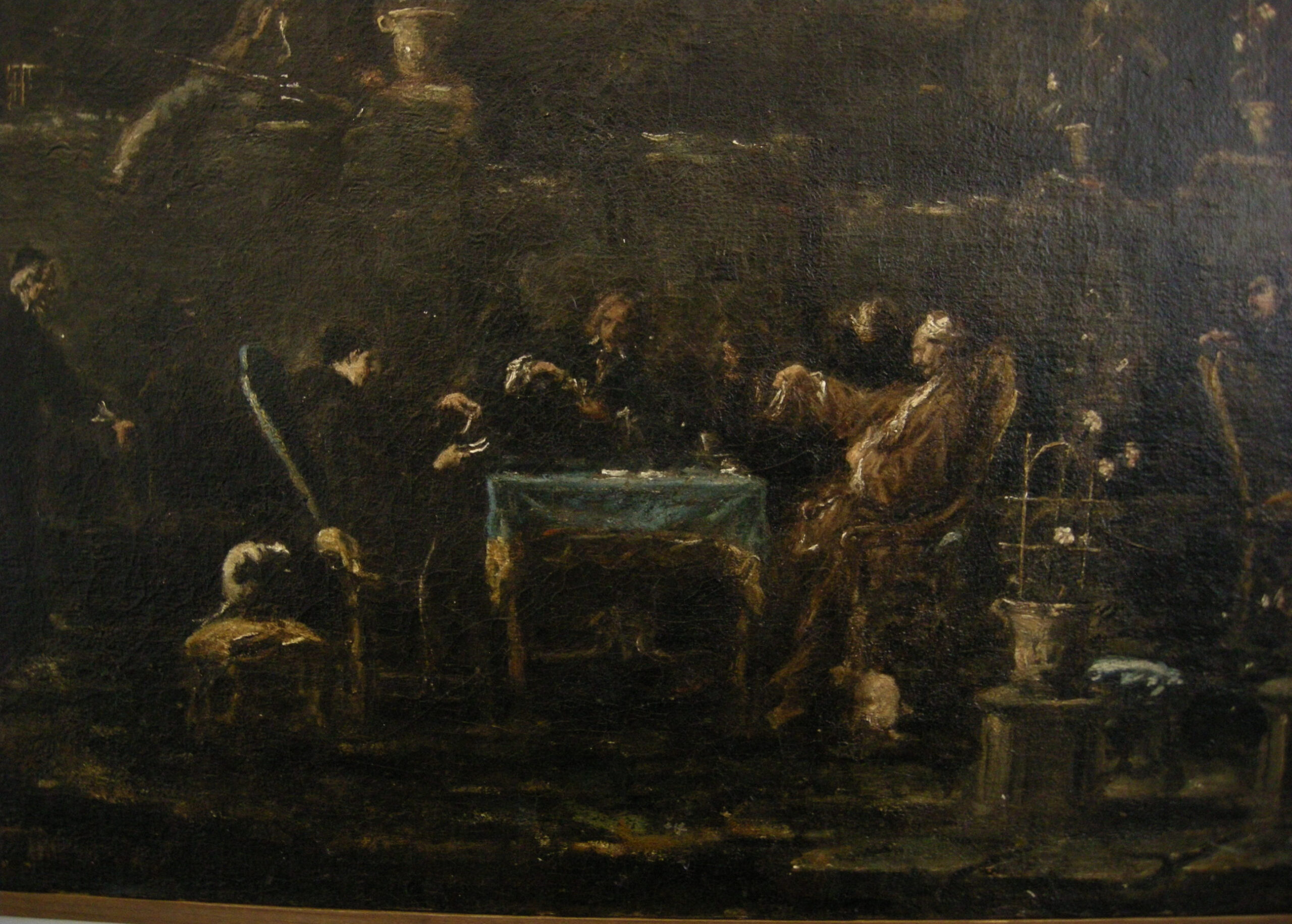Painter Alessandro Magnasco, known as Lissandrino, died on 12 March 1749 in Genoa, his hometown.
Alessando had studied in Milan, in the workshop of Filippo Abbiati (1640–1715), and his early works are deeply influenced by the harsh chiaroscuro typical of seventeenth-century Lombard painting. However, the painter soon developed a distinctive personal style, characterized by swift brushstrokes and darting flashes of light.
Initially, the artist specialized in the creation of small human figures to be inserted in the architectural or landscape creations of other painters, for example Clemente Spera (1661-1742), a specialist in illusionist perspective effects. Around 1725 Magnasco began to autonomously design landscapes and architectural settings for his figures.
Magnasco’s work was inspired by prints of Flemish and Dutch genre scenes, and by literature, for example Spanish picaresque novels and stories about the pitocchi, sea beggars and adventurers.
The painter was very successful during his life. For example, from 1703 to 1709 he worked at the court of Grand Prince Ferdinand de’ Medici in Florence. Moreover, his paintings reveal an engagement with the key cultural debates of the age, and a personal acquaintance with progressive aristocratic families as the Borromeo, the Archinto, the Arese, the Visconti and the Casnedi. Nevertheless, he was almost forgotten after his death, perhaps because of his unconventional style and often gloomy compositions.
Reference: Federica Lamera and Fausta Franchini Guelfi. “Magnasco.” Grove Art Online, Oxford University Press, http://www.oxfordartonline.com/subscriber/article/grove/art/T053137pg2.
The Tame Magpie, ca. 1707-8, oil on canvas, 63.5 x 74.9 cm. The Metropolitan Museum, New York, inv. 1984.191.
The Raising of Lazarus, oil on canvas, 1715-1740, 65.5 × 83.5 cm. Rijksmuseum, Amsterdam, inv. SK-C-1361.
The Seashore, 1720s, oil on canvas, 158 x 211 cm. The Hermitage, St. Petersburg. Source: Web Gallery of Art.
Game of Cards in a Garden, oil on canvas. Palazzo Bianco, Genoa.




